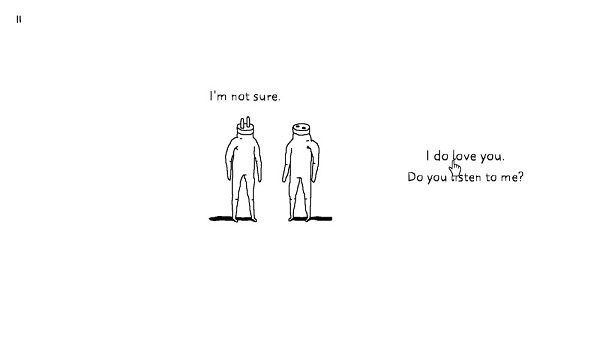
Mario von Rickenbach , Michael Frei
Etter Studio
PC, Mac, iOS, Android
When faced with the prospect of paying money for a product, gamers can be a notoriously choosy and opinionated bunch. The recent hoopla over The Order: 1886 is only the latest piece of an argument that has raged over several generations of consoles, as well as their PC and mobile hybrids. Despite the vehemence and aggression related to this particular question, these long-standing debates seem to really turn on a single idea: how much is a quality experience actually worth? A latecomer to the argument, short-film-turned-short-game, Plug & Play, may find itself very much at the center of this conversation in the months and years to come
As much as new age digital funding and distribution models like Kickstarter, GoFundMe, and Steam Greenlight have changed the paradigm of gaming over the last little while, it remains a steadfast guarantee that you’ve never, ever, seen anything quite like Plug & Play. What began as a 6 minute short film that ran the festival circuit a couple of years back has morphed over time into a playable, puzzle-like, digital allegory, sort-of-game that stands on the fringes of what digital entertainment, and it’s status as art, can expand into being over the coming years.

Basically playing out like an interactive cartoon, Plug & Play begins with two impossibly long fingers reaching out of reality to touch against one another. In fact, you don’t even realize the game has already started until the fingers connect, and one of them, your finger, is dominated. As the screen reloads and you watch the fingers reaching out all over again, you suddenly realize you can control one…but you still don’t know what to do with it. In fact the only way to pass the first screen is to reverse what happened initially, and defeat the other finger by ending up on top.
It’s only a brief moment at the start of the experience but it tells you a lot about what to expect. The game has presented you with a situation and forced you to analyze it. Out of context, you just see two fingers reaching toward one another, so you are content to allow them to touch. It isn’t until your finger is defeated that you take action, after all, this is a game right? Well, that seems to be the point, doesn’t it. Much like in many relationships, what starts as a chance for profound human connection can quickly turn into a power struggle. Cynical as this message might be, it’s hardly surprising. After all, how many times have we heard the terms “player” and “game” when discussing the world of dating?
Plug & Play is filled with rich metaphors such as these, although they are so subtle and bizarre that players could spend hours attempting to decipher the meaning of each scene, and how it ties together into the overall pseudo-narrative. A particularly effecting scene plays out when you are given dialogue choices for your nameless plug-tagonist to attempt to have a successful conversation with your significant other. Strangely, your dialogue choices don’t make a lot of sense, and boil down to yes or no answers or a bare expression of emotion. You must fail, and you do. The scene then switches perspectives, allowing you to speak from the other end, before, again, failing.
 In another sequence, the lights turn out above you, so you and your love plug in together to create a new light. Soon, however, other plugs arrive and attempt to plug into your connection as well. Your energy is diverted, the lights turn off, and these new additions destroy your connection with one another just as it has begun.
In another sequence, the lights turn out above you, so you and your love plug in together to create a new light. Soon, however, other plugs arrive and attempt to plug into your connection as well. Your energy is diverted, the lights turn off, and these new additions destroy your connection with one another just as it has begun.
I could easily go on, drawing each scene for you, and explaining my interpretation, but what sense would there be in that? This is a game that is all about the experience; it is a deeply personal one, and one that is well worth having. For anyone who has struggled with relationships in their lives (read: everyone) Plug & Play has a lot to say about human connections and the human condition, you just have to be willing to look past the absurdity and oddness of the images presented before you, and ask yourself what they mean.
As mentioned in the first paragraph, gamers can be pretty stiff with a buck, and many will balk at the notion of spending $3.29 on a game that only lasts 15 minutes or so, but as players of Journey, Gone Home, or A Bird Story well know, it should never be the price that matters most but the experience itself, and its ability to remain in your mind, long after the fact.

